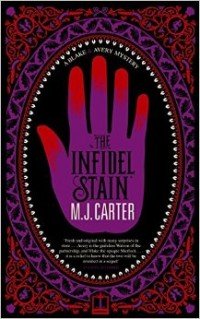London, 1841. It’s the fourth year of Queen Victoria’s reign and the city is riven by the first stirrings of proper democracy. The Chartists have put forward a six-point pathway which will, if adopted, totally reform the way in which the country is governed. Against this backdrop we have what seems to be a murder mystery involving two deaths. Two printers have been literally gutted and found on their presses. The murders took place in the teeming slum streets of the worst part of the city, and the fledgling police force are showing little interest.
The philanthropic Lord Allington hires a mysterious and saturnine investigator, Jeremiah Blake, to probe deeper into the killings. Blake enlists the help of his former colleague, William Avery. The two men have a violent shared history dating back to the days when they both served in India. As the pair investigate the killings they are forced to infiltrate the ranks of the Chartists – a turbulent mix of violent revolutionaries, Christian abstainers and constitutional reformers. When more men are killed, Avery and Blake suspect that the murders stem from a conspiracy which originates amongst the richest and most powerful people in English society.
Avery is something of a Watson to Blake’s Holmes. He’s not always the quickest to catch on when events become complex, and is ill at ease among the poor and destitute in the rookeries of St Giles and Seven Dials. Blake, who shares an interest in taking drugs with Sherlock Holmes, is more comfortable than his partner when heading down the meanest and filthiest streets and alleys. Several celebrities of the day appear in the story, including the social journalist Henry Mayhew, and there’s even a walk on part for Charles Dickens. Blake, it turns out, is a distant relative of someone he knew as ‘Mad Uncle Billy’ – none other than the great poet and painter William Blake.
There is a definite whodunnit element to the story, but not one where the author plants too many clues for you to pick up. The drama ends with a magnificent, moustache-twirling denouement, in which the real villain is exposed, a Little Nell orphan girl is rescued from depravity, and all the loose ends are tied up in neat and conclusive knots.
My only criticism of the book – and it does not diminish my admiration for Carter’s skill as a story teller – is that she has chosen to tell her tale through the eyes of Avery. This firmly cements the style of description and dialogue into what is, essentially, a Dickensian pastiche. This is not necessarily a bad thing, and the style is maintained constantly with nary a slip, but because Avery is a bit like the Harry Enfield character Tim Nice-but-Dim, some of what he says comes over in a slightly wooden and, occasionally, melodramatic fashion. This being said, Carter’s knowledge of the period is impressive, and the passionate anger of those who sought reform burns white hot through the narrative. And the ‘infidel’ of the title? This was the slang term given to those early reformers and seekers of democracy, who feared neither God nor man.
The Infidel Stain is released on 30 April.
Fig Tree
Print/Kindle/iBook
£6.64
CFL Rating: 4 Stars
